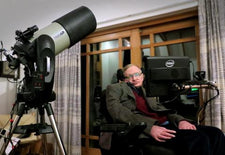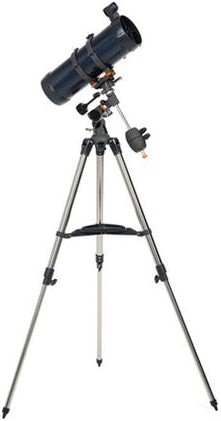Computerized GoTo and GPS Telescopes
May 4, 2015
One of the most revolutionary enhancements of telescopes in recent years is the computerized auto-finding telescope. These telescopes have the ability to take the user directly to any object in the sky at the push of a button. Commonly known as Go To telescopes, these instruments are changing how the backyard astronomer uses telescopes.
This article will talk about how GoTo telescopes work and how they do much more than just find objects.
Simple - But not that simple - A telescope that automatically moves and takes you to objects in the sky! As amazing as that sounds there is a bit of pre set-up work that needs to be done. It is not as simple as setting the telescope on the ground and pressing the "Saturn" button. The telescope first needs to be aligned.
Alignment ProcedureIn order for a GoTo telescope to accurately point to objects in the sky, it must first be aligned with two known positions (stars) in the sky. With this information the telescope can create a model of the sky, which it uses to locate any object with known coordinates. The most common way to align a GoTo telescope is the 2 Star Alignment. The GoTo telescope will ask the user to input simple information such as Date, Time and Location - This basic information will have the telescope roughly aligned. Now it will need to be fine-tuned. Based on the information you have provided the telescope it will automatically select a bright star that is above the horizon and start moving towards it. This movement of the telescope is known as slewing . At this point the telescope is only roughly aligned, so the alignment star should only be close to the field of view of the Finder Scope. Once finished moving, the display will ask you to use the hand controller to center the selected star in the view of the eyepiece. Centering the star in the eyepiece will now give the telescope an extremely accurate reference point.
After the first alignment star has been entered the telescope will automatically slew to a second alignment star and have you repeat the same procedure for that star. When the telescope has been aligned to both stars the display will tell you it is finished its alignment and you are now ready to find your first object!
If the wrong star was centered and aligned to, the telescope will display that the alignment was not completed successfully. If you are not sure if the correct star was centered, remember that the alignment stars will be the brightest stars nearest the field of view of the finderscope. There may be other fainter stars visible that are closer to the center of the finderscope, but the actual alignment star will be obviously brighter than any other star in the area.
The alignment procedure is far from difficult, but it does take some practice. The reward of having thousands of objects at the push of a button is simply amazing.
Automatic Tracking - Locate and TrackGoTo Telescopes do something maybe more important than locating objects - they also track the object. Why is this important? The Earth is rotating on its axis and the telescope needs to also rotate in the opposite direction to counter the movement of the Earth. If you were to stand outside and point your arm up at the Moon and not move your arm, eventually you would not be pointing at the Moon anymore.
In a telescope, this speed is greatly amplified. Let's say, for example, you are viewing Saturn at a magnification of 40x - if you are not tracking, Saturn will only stay in the view of your eyepiece for a few seconds. Imagine if you are magnifying the same object at 100x magnification or more! The need to track an object is critical to enjoying observing anything from the moon to deep space galaxies. GoTo telescope will not only locate the object, but they will automatically track the object in the sky by turning in the opposite direction of the Earths rotation at the appropriate speed.
GPS Powered GoTo TelescopesMany GoTo telescope also have GPS - Global Positioning System - features built right into the telescope. A GPS powered telescope will make the alignment procedure dramatically easier. There is no need to enter any date, time or location because the GPS will tell the telescope where it is on Earth within a matter of a few feet! When the telescope slews to the 2 alignment stars, they are very accurate. The telescope will still require you to fine tune the alignment by centering the alignment stars in the view of the eyepiece.



